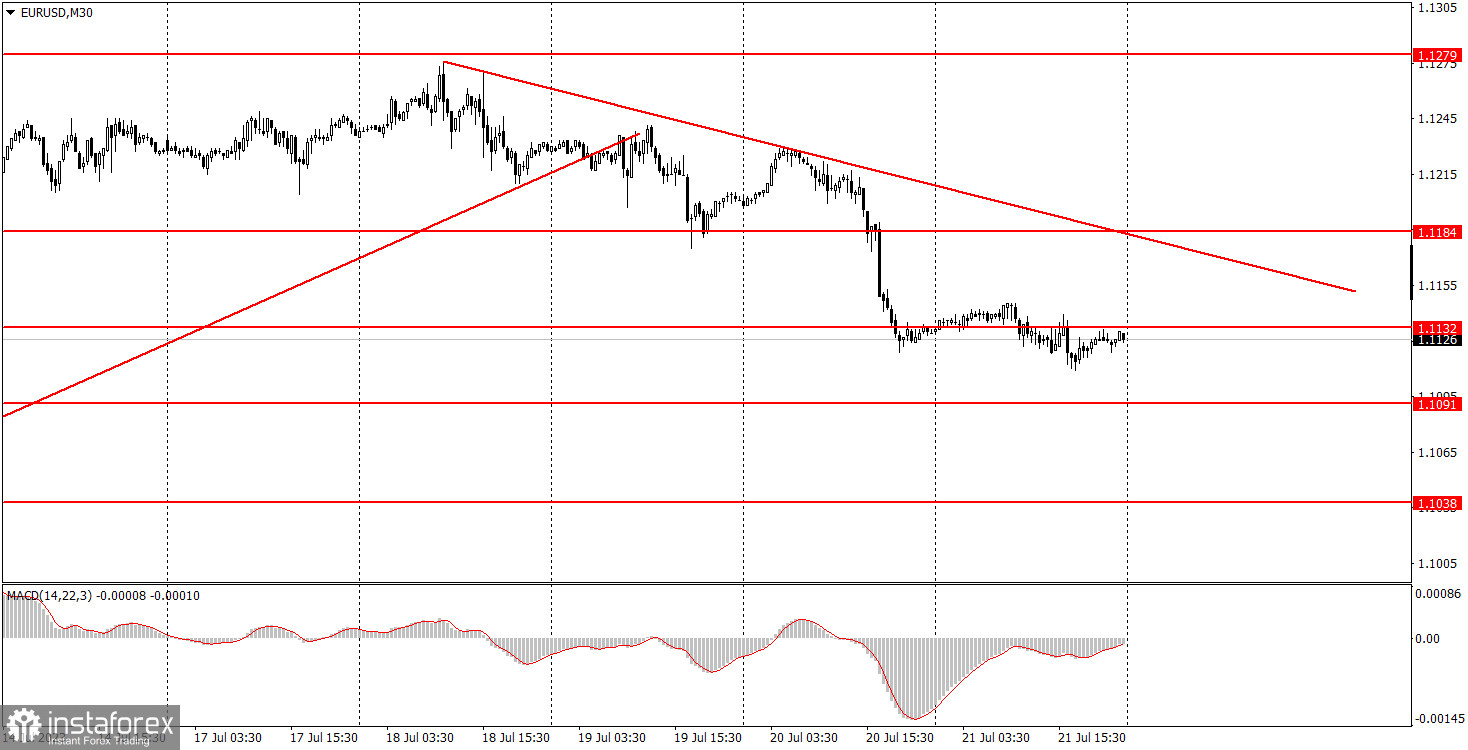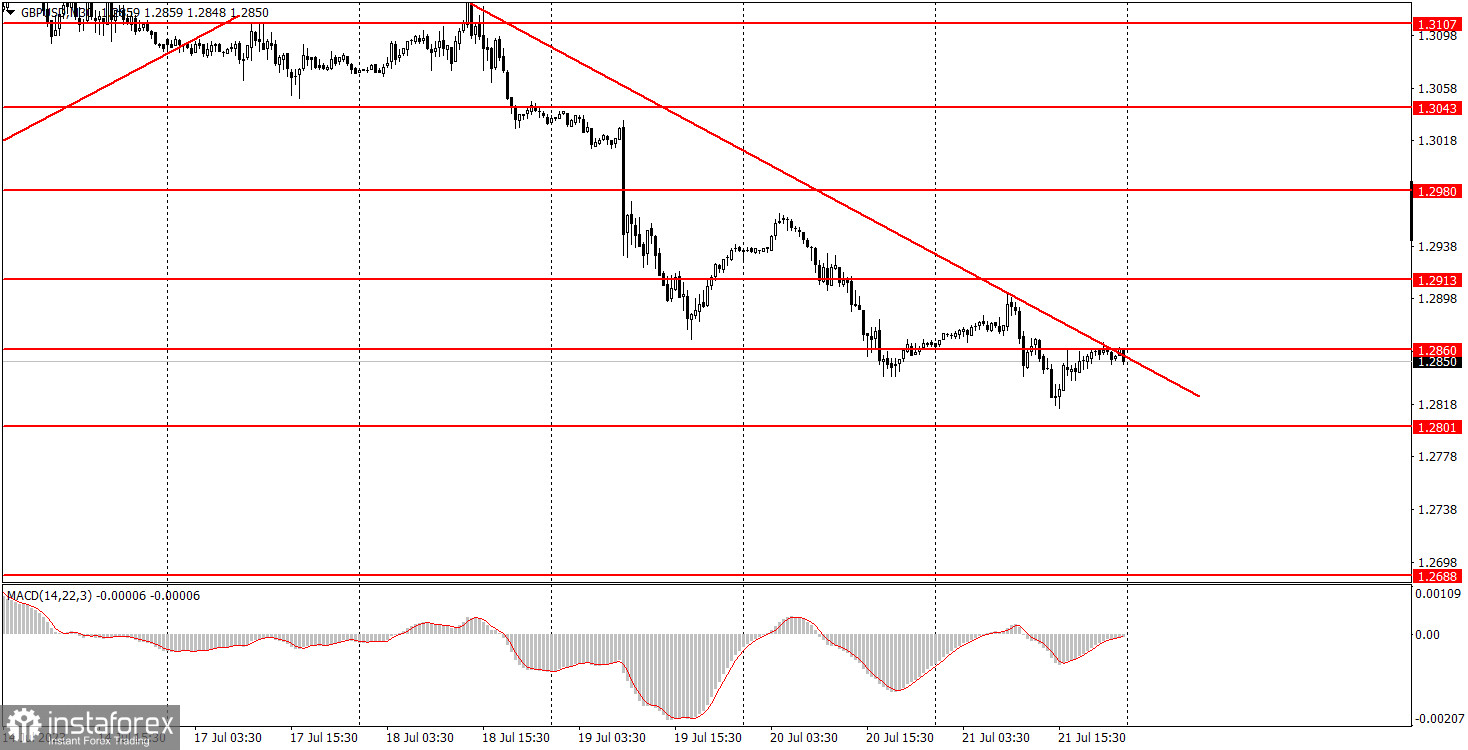Overview of macroeconomic reports

Three reports scheduled in the European Union, the United Kingdom, and the United States: the service and manufacturing PMIs, as well as composite indices. Based on forecasts, each indicator should retain the general trends that have been observed in recent months. Services sector gauges will stay above the 50.0 level, while manufacturing gauges will continue to decline below the "waterline." Therefore, traders are not likely to react impulsively to these figures. However, in case numbers significantly deviate from forecasts, this may stir some market reaction. We believe it is unlikely to exceed 50 points.
Overview of fundamental events
There is absolutely nothing noteworthy about today's fundamental events. The Federal Reserve and the European Central Bank have already entered a "blackout period" ahead of their upcoming meetings next week. This means that members of the monetary committees are prohibited from making comments on monetary policy. Consequently, there will be no speeches from high-ranking officials until the central bank meetings. Monday may turn out to be relatively uneventful, although, of course, the pound may attempt to build on its downward movement.
Bottom line
A total of 12 business activity gauges will be published (including German indices), however, if forecasts and actual values are close to each other, there will be no significant market reaction to these reports. There are no major fundamental events scheduled. Both the euro and the pound may continue their relatively weak decline within the established downtrends formed over the last week.
Main rules of the trading system:
- The strength of the signal is calculated by the time it took to form the signal (bounce/drop or overcoming the level). The less time it took, the stronger the signal.
- If two or more trades were opened near a certain level due to false signals, all subsequent signals from this level should be ignored.
- In a flat market, any currency pair can generate a lot of false signals or not generate them at all. But in any case, as soon as the first signs of a flat market are detected, it is better to stop trading.
- Trades are opened in the time interval between the beginning of the European session and the middle of the American one when all trades must be closed manually.
- On the 30-minute timeframe, you can trade based on MACD signals only on the condition of good volatility and provided that a trend is confirmed by the trend line or a trend channel.
- If two levels are located too close to each other (from 5 to 15 points), they should be considered as an area of support or resistance.
Comments on charts
Support and resistance levels are levels that serve as targets when opening long or short positions. Take Profit orders can be placed around them.
Red lines are channels or trend lines that display the current trend and show which direction is preferable for trading now.
The MACD (14,22,3) indicator, both histogram and signal line, is an auxiliary indicator that can also be used as a source of signals.
Important speeches and reports (always found in the news calendar) can significantly influence the movement of a currency pair. Therefore, during their release, it is recommended to trade with utmost caution or to exit the market to avoid a sharp price reversal against the previous movement.
Beginners trading in the forex market should remember that not every trade can be profitable. Developing a clear strategy and money management is the key to success in trading over a long period of time.
 English
English 
 Русский
Русский Bahasa Indonesia
Bahasa Indonesia Bahasa Malay
Bahasa Malay ไทย
ไทย Español
Español Deutsch
Deutsch Български
Български Français
Français Tiếng Việt
Tiếng Việt 中文
中文 বাংলা
বাংলা हिन्दी
हिन्दी Čeština
Čeština Українська
Українська Română
Română


